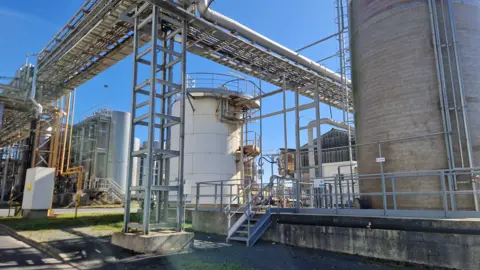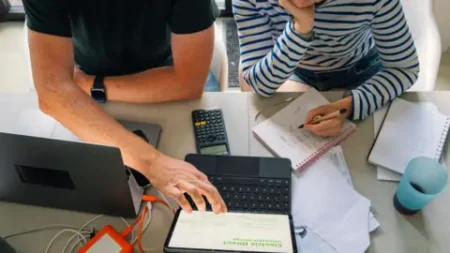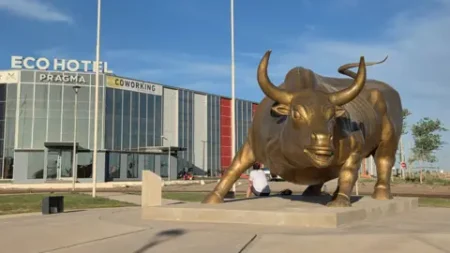### Rare Earth Independence: Europe’s Strategic Move Away from China
In recent years, rare earth metals have emerged as critical elements in the global economy, playing essential roles in technologies such as smartphones, electric vehicles, advanced electronics, and wind turbines. One of the pivotal players in this field is the chemical company Solvay, which has been processing rare earth elements at its facility in La Rochelle, western France, since 1948. This location is now being expanded to meet the surging demand for these vital materials across Europe.
Despite their importance, approximately 70% of the world’s rare earth mining and around 90% of its refining are concentrated in China. The Chinese government’s long-term investment in this sector has solidified the country’s dominance. Consequently, Europe, along with other regions, is striving to reduce its dependency on Chinese imports. Philippe Kehren, CEO of Solvay, emphasized the need for diversified sourcing, particularly in light of recent global events such as the COVID-19 pandemic and the war in Ukraine. These incidents have highlighted vulnerabilities in supply chains reliant on single sources, compelling European nations to explore alternative options.
The urgency behind this change is underscored by the European Union’s Critical Raw Materials Act, which was enacted last year to reduce reliance on imported materials for extraction, processing, and recycling by 2030. Currently, Europe has only two rare earth processing facilities: one in Estonia and another in France, which is notable for being the only plant outside of China that can process all 17 types of rare earths. This limited capacity has prompted increased investment toward transitioning the La Rochelle facility to support the burgeoning demand for magnets used in electric vehicle batteries and advanced electronics.
### The Role of Recycling and Mineral Sourcing
A significant focus of Solvay’s operations revolves around recycling existing rare earth materials within Europe. Kehren estimates that through recycling end-of-life motors and other equipment, the facility could supply approximately 30% of Europe’s rare earth requirements. However, to address the growing demand, further sourcing from countries like Brazil, Canada, and Australia will become necessary in the future.
As the continent seeks sustainability, European projects in Norway and Sweden are among the most advanced, but it’s anticipated that it may take a decade before these projects can produce minerals. Kehren asserts that establishing local mines is crucial for securing a consistent supply, without trying to create an excess number of sites. The intricate processes involved in turning raw materials into usable rare earth powders are a closely guarded secret, requiring up to 1,500 steps. Only select individuals are allowed in the processing facility due to concerns about intellectual property and maintaining competitive advantages.
Specialized areas within the La Rochelle plant, such as the liquid separation unit, play a critical role in the purification of various rare earths, managed meticulously to ensure effective separation. The facility itself is expansive, resembling a complex network of interconnected buildings and metal pipes, indicative of the extensive industrial processes at play.
### The Economic Stakes and Future Developments
The French government is backing the La Rochelle facility with approximately €20 million in tax credits, recognizing the critical need to mitigate the risks associated with reliance on a single source, such as potential geopolitical tensions or natural disasters. Interestingly, this challenge is not only local but also international, as European lawmakers are urging the European Commission to foster more robust policies that reduce dependency on Chinese rare earths.
Recent dialogues from Chinese officials, such as Foreign Minister Wang Yi, frame Beijing’s export controls as both a national right and common practice, especially concerning materials with military and commercial implications. This geopolitical interplay reflects the broader context of EU trade negotiations, where access to raw materials has been a central issue.
In conclusion, as the demand for rare earths continues to rise, Europe is taking proactive steps to secure its supply chains. Investments in recycling, processing facilities, and potential sourcing from other countries are essential strategies for achieving greater independence. The unfolding developments hinge on not only technical advancements within processing but also the political will to establish a cooperative approach that may ultimately reframe global supply chains in this critical sector.











